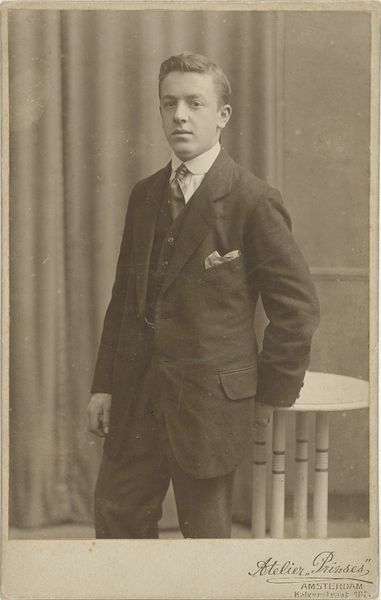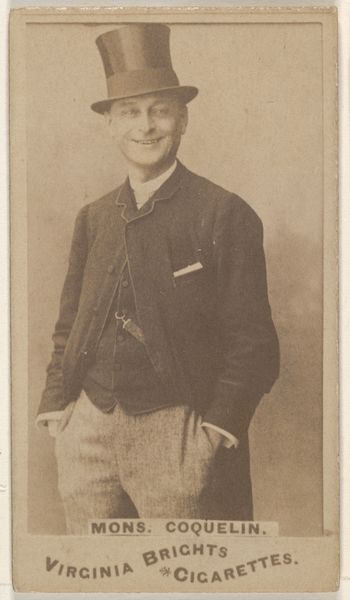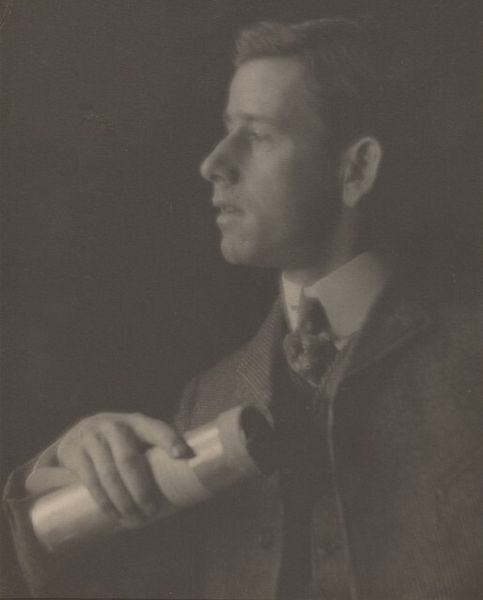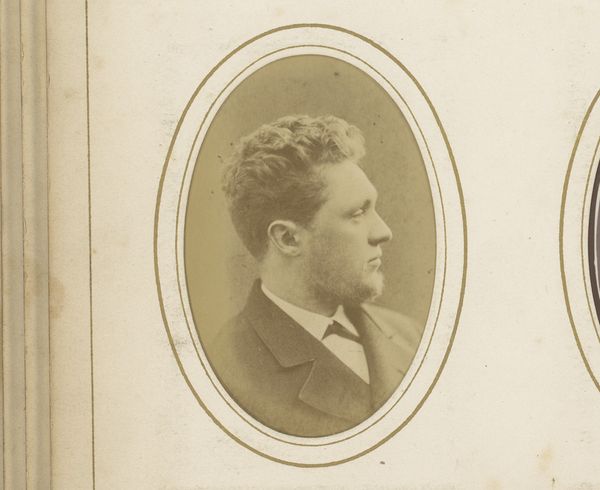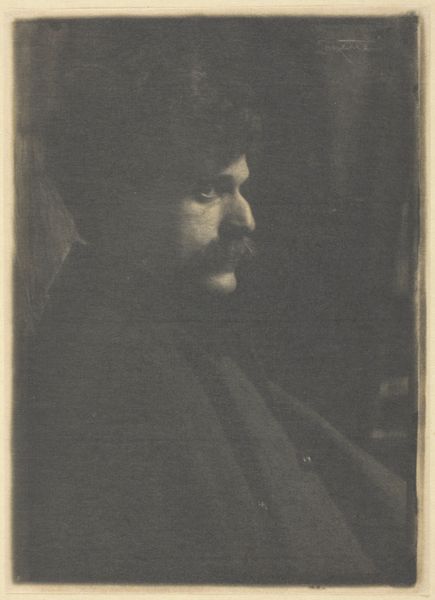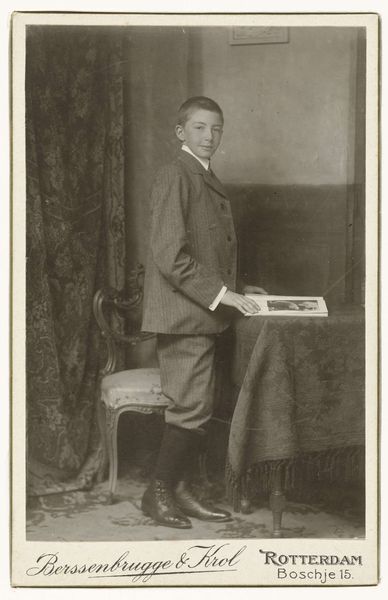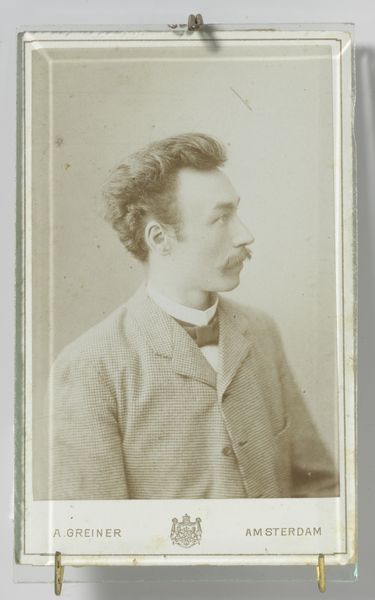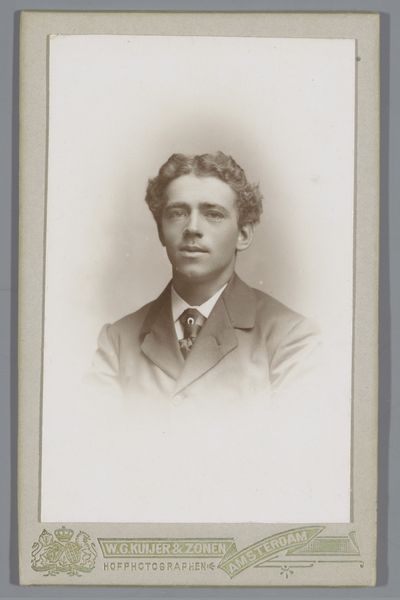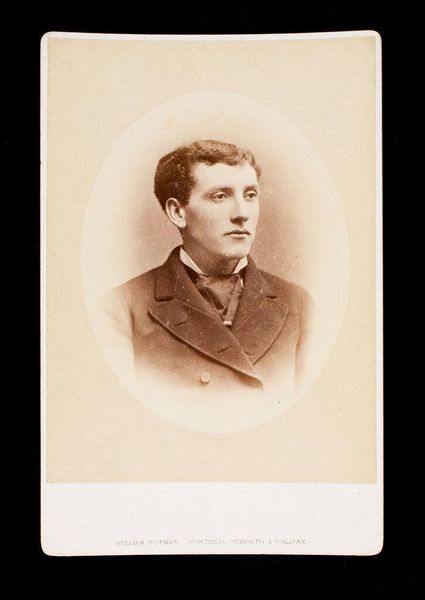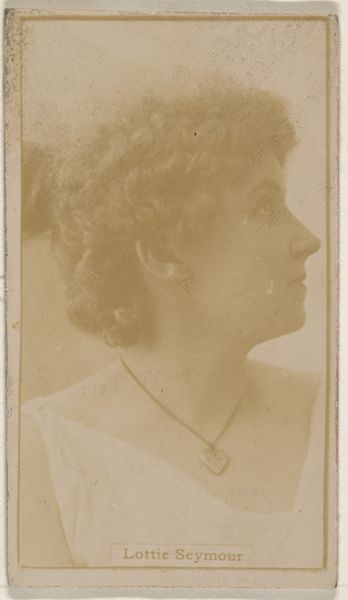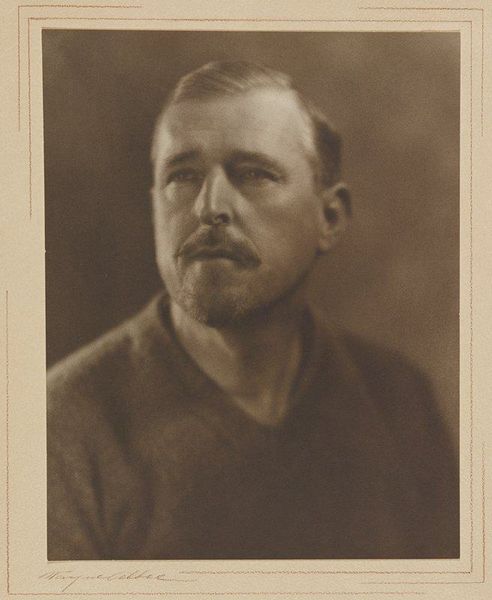
Copyright: Public domain
Curator: Immediately striking is this ethereal, almost dreamlike quality. It feels delicate, poised between clarity and fading away. Editor: This is "Portrait of Baron Adolph de Meyer" by Gertrude Kasebier, created around 1903. Kasebier was a prominent figure in the Pictorialist movement, which championed photography as fine art. I wonder how this movement defined, or perhaps redefined, the social perception of photography? Curator: Ah, yes, Pictorialism! You see how Kasebier manipulates the image to resemble painting? The soft focus, the muted tones… it’s less about sharp detail and more about mood, invoking a sense of timeless elegance. Notice the subtle halations around the head, almost like a halo. Editor: It is interesting that she would shoot the Baron in profile. De Meyer was himself a photographer and known for photographing fashionable society figures, often women. There seems to be a gendered dynamic here where Kasebier re-orients her male subject with soft aesthetics and delicate lighting. It raises the question of who gets to gaze and who is being gazed at in this early-20th-century social context. Curator: Precisely! Profiles have carried significant symbolic weight throughout history, representing authority, detachment, or introspection. Here, it perhaps underscores the Baron’s refinement, his aesthetic sensibility, presented in such a subtle manner. The absence of direct eye contact further contributes to the feeling that the viewer is being given an access, rather than issuing one. Editor: The soft focus aesthetic was intended to lift photography into the realm of art by breaking from purely documentary practices. How much do you think this had to do with securing its acceptance amongst academic circles, at the time? Do you think the lack of technical clarity opened the door for it? Curator: Indeed! By employing these impressionistic techniques, Kasebier aligns her photography with painting and drawing, art forms with higher status, and in doing so is creating and signaling entry into an entirely new visual order. It allowed photographers to claim their work wasn't merely mechanical reproduction but the result of artistic vision, a singular emotion transformed into imagery. Editor: And now we see the enduring effects of this period with photography's recognized contributions to high art across public museums and galleries. Seeing it displayed here only confirms how artists like Kasebier forged this new relationship and expanded the place for photography in culture. Curator: Ultimately, I feel we are left with the image of quiet elegance, of beauty found not in explicit detail but in suggestive nuance and subdued tones.
Comments
No comments
Be the first to comment and join the conversation on the ultimate creative platform.
